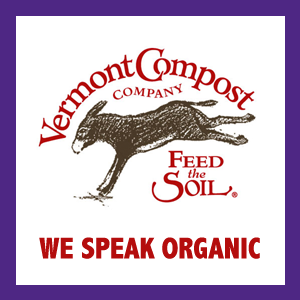I’m tired of hearing about how local food is fresher than produce trucked in from California, Arizona, and Mexico. “Freshness” relates to the amount of biological activity that has occurred from the time of harvest to the time a vegetable is prepared in your kitchen. Local food can provide tremendous benefits to a community’s economic vitality, to the flavor and selection of produce, and to a more-secure, less-carbon-outputting food system; but freshness is not a fundamental quality of locally-grown produce.
When I started Rock Spring Farm, I went to a meeting of growers for local food producers in Decorah at which the produce manager of the local natural foods cooperative commented that the lettuce she purchased from local producers didn’t last very long, while the produce from California had a shelf-life of a week to ten days. I had experienced the same thing with local produce on a farm I managed in Maine, and it all comes down to temperature. In both of those times and places, local growers hadn’t invested in the equipment and systems necessary to maintain produce quality.
Within the range of temperatures where plants survive, the rate of chemical and biological processes approximately doubles for every ten-degree increase in temperature. That means that produce stored at 45 degrees will last half as long as produce stored at 35 degrees; and produce stored at 55 degrees will last only a quarter of the time. When we pick a vegetable, we separate it from the source of energy and sustenance that comes from having its extensive network of roots expanded throughout the soil – at this point the portion of the plant we’ve picked begins the process of dying, which in vegetables is characterized by a decline in “freshness” and quality.
Getting produce cooled to the proper storage temperature is the first essential step in ensuring freshness; keeping it at the proper temperature is the second. The large-scale production systems in the vegetable-producing regions of this country dedicate a tremendous amount of infrastructure and energy to getting produce cold and keeping it that way. It is not unusual for a harvest operation to include refrigeration units right in the field, climate-controlled packing facilities, and refrigerated transportation from harvest right to the point of sale.
Furthermore, it’s not just the air temperature of the storage environment that matters – it’s the interior temperature of the produce. Grocery store coolers and home refrigerators do not have the power they need to actually suck the heat out of warm produce – that needs to be done by the farmer. And dunking in cold water (ground water comes out of the tap at around 45 degrees on the Iowa-Minnesota state line) and storing at ambient temperatures just can’t do that.
At Rock Spring Farm, we’ve invested in the cooling facilities and harvest systems that get produce cooled quickly, and keep it cold until it’s sold. Whether it’s planning for harvest to allow time for equipment to cool the produce, our rapid harvest techniques and shading in the field prior to transport to our insulated packing facility, adequate potable water to provide a continuous supply of cold water for initial cooling, our commercial-grade walk-in cooler, or the cold chain our delivery partners maintain throughout the delivery process, we work hard to ensure that vegetables will stay alive – and stay fresh – for as long as possible.
When I started Rock Spring Farm, I went to a meeting of growers for local food producers in Decorah at which the produce manager of the local natural foods cooperative commented that the lettuce she purchased from local producers didn’t last very long, while the produce from California had a shelf-life of a week to ten days. I had experienced the same thing with local produce on a farm I managed in Maine, and it all comes down to temperature. In both of those times and places, local growers hadn’t invested in the equipment and systems necessary to maintain produce quality.
Within the range of temperatures where plants survive, the rate of chemical and biological processes approximately doubles for every ten-degree increase in temperature. That means that produce stored at 45 degrees will last half as long as produce stored at 35 degrees; and produce stored at 55 degrees will last only a quarter of the time. When we pick a vegetable, we separate it from the source of energy and sustenance that comes from having its extensive network of roots expanded throughout the soil – at this point the portion of the plant we’ve picked begins the process of dying, which in vegetables is characterized by a decline in “freshness” and quality.
Getting produce cooled to the proper storage temperature is the first essential step in ensuring freshness; keeping it at the proper temperature is the second. The large-scale production systems in the vegetable-producing regions of this country dedicate a tremendous amount of infrastructure and energy to getting produce cold and keeping it that way. It is not unusual for a harvest operation to include refrigeration units right in the field, climate-controlled packing facilities, and refrigerated transportation from harvest right to the point of sale.
Furthermore, it’s not just the air temperature of the storage environment that matters – it’s the interior temperature of the produce. Grocery store coolers and home refrigerators do not have the power they need to actually suck the heat out of warm produce – that needs to be done by the farmer. And dunking in cold water (ground water comes out of the tap at around 45 degrees on the Iowa-Minnesota state line) and storing at ambient temperatures just can’t do that.
At Rock Spring Farm, we’ve invested in the cooling facilities and harvest systems that get produce cooled quickly, and keep it cold until it’s sold. Whether it’s planning for harvest to allow time for equipment to cool the produce, our rapid harvest techniques and shading in the field prior to transport to our insulated packing facility, adequate potable water to provide a continuous supply of cold water for initial cooling, our commercial-grade walk-in cooler, or the cold chain our delivery partners maintain throughout the delivery process, we work hard to ensure that vegetables will stay alive – and stay fresh – for as long as possible.




 RSS Feed
RSS Feed
